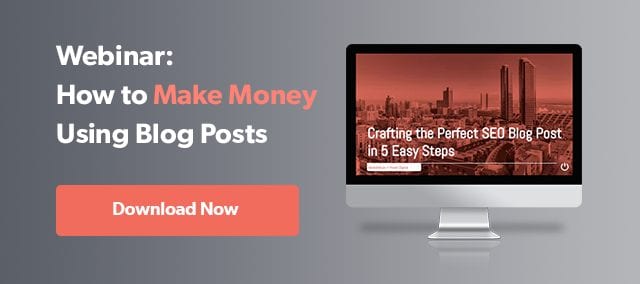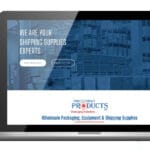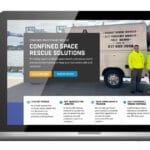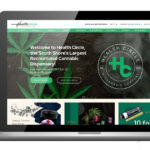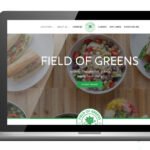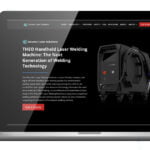Hey! Hello there! Look here! Read me!
Now wasn’t that easy? Just like that sentence made you keep reading, a landing page design should convince a visitor to keep navigating your website and eventually use your product or service. The key is to have a clear message with a strong call to action (“Read me!”). A good landing page effectively converts site visitors into actual customers, which is a big job for one little webpage to take on.
Thus, here are some landing page best practices to help you make your landing page the best it can be and increase conversions and revenue (CRO).
What Are Landing Pages Used For?
A landing page is different from your typical web page because it has a singular focus: to convert lead generation from marketing initiatives into customers. Upon clicking an online advertisement, a user first visits this landing page, where the hope is that they will follow the call to action and buy the product or service advertised. But you have to be strategic with the content that goes on it.
To do so successfully, however, is a challenge in and of itself. Most companies see the measly conversion rate of 2.8% to 6%, which is not ideal. Read on to learn about why most landing pages fail to increase conversion rates, and how to make yours stand out!
Why Is It Important to Have a Strong Landing Page?
A strong landing page is the lifeblood of any successful digital marketing campaign—the Mothership, so to speak. Without a strong landing page, all your effort in online marketing could be for naught. The bounce rate of your site will be high. The purpose of a landing page is to drive action from your audience. Where digital marketing pushes reel users into your website, your landing page is what determines if the hook sinks or not.
With a strong landing page design, users will know exactly what they have to do—whether they have to register for an event, sign up for an email list, download a free guide, watch a video, or make a purchase. This specific call-to-action is designed to drive conversion rates for your business and capture leads for marketing opportunities in the future.
Key Components of a Strong Landing Page
So, how do you create a great landing page? As previously mentioned, in most industries, companies only see a median landing page conversion rate of about 5%. There are three key components of landing page optimization that truly convert:
- Compelling Copy – the specific text—or lack thereof—that appears on a landing page
- Creative Design – clean, creative design that draws the eye towards a call to action
- Focused Layout – minimal features and buttons to avoid distracting the user
The real key to a successful landing page is to make it painfully obvious what it is you want visitors to do. The three components listed above should work together to guide your user to your desired call to action and make the user experience seamless.
Compelling Sales Copy
In the case of landing pages, less is more. Too much copy, or unnecessary copy, may distract the user from your call to action, effectively driving away potential customers. Here are some key factors that make sales copy compelling:
Nail the headline
Unfortunately, users rarely read the copy on your landing page. For the most part, they skim, scroll, and scroll some more. For that reason, you must come up with an attention-grabbing headline to compel your user to break their skimming habit.
Focus on benefits, not solutions
Instead of listing out what your product or service is, concisely list the benefits of using your product or service. By clicking on your ad, the visitor already knows what type of solution they are looking for. For that reason, your landing page should just focus on why your solution is better than the other ones.
Separate the page into readable chunks
If you remember anything about your high school days, nothing scares people more than assigned reading. Make sure that your landing page incorporates design best practices and doesn’t look like a novel by separating your copy into reasonable chunks. Catchy headings and subheadings will guide the reader through the page, while short paragraphs and sentences make the experience less overwhelming to the audience.
Be clear and concise
A user already has a propensity to skim through the text, so don’t make it easier for them to do so. Avoid complex sentence structure or long, drawn-out copy. Keep bullet points short and sweet. Supplement your copy with big, bold pictures that align with your messaging to increase user experience. Your call to action should also be concise—a good rule of thumb: it should fit in a button graphic.
Your offer should be clear and obvious—a catchy “hook” to reel a visitor in certainly helps. Most importantly, catchy copy is never going to stick if it’s surrounded by distracting messaging or unnecessary calls to action. For landing pages, be sure to cut the fat and only focus on the singular action you wish your user to take. This should be reflected as much in the copy as it is in the page design.
Creative Design
As mentioned before, people don’t generally prioritize reading when they visit a website. For this reason, intuitive and creative design is vital for a good landing page. Your design should enhance the effectiveness of your copy and draw the user to your call to action. Here are some tips for creating landing page design that converts:
- Simplify your landing page design – Busy design distracts users from your CTA and may even drive them away. Focus on a singular color scheme and simple graphics that align with your company’s messaging and brand identity.
- Use contrasting colors – If your general color scheme is blue, make your CTA button orange. That way, the user has no doubt what they should do.
- Straight-forward buttons – Buttons should have simple designs, a recognizable shape, bold colors, and visible placement on your landing page. These will increase your site’s click-through rate.
- Maintain visual consistency – Landing page design that doesn’t match their ads can actually drive visitors away increasing bounce rate, so ensure that both visual and textual messaging is cohesive between all marketing materials.
Focused Layout
In his 2004 book, The Paradox of Choice, psychologist Barry Schwartz explains that too much consumer choice can result in customer anxiety and decrease conversion rate. This idea also applies to landing pages. A layout that presents too many options or content to a user can be incredibly distracting and ineffective. The goal for your layout design should be 100% focus from the user towards your singular call to action. Here’s how you do that:
- Stay “above the fold” – Keep your most important messaging on the upper part of the front page. This ensures that your essential messaging is visible to the visitor before they have to scroll. If you nail this, the visitor will scroll down to learn more.
- Directional cues – In case your landing page takes a few scrolls to get through, use sneaky design tricks to ensure that that scrolling leads your user to your CTA. Visual cues like arrows, animations, or more subtle design elements can help your user navigate your landing page with ease.
- Limit user options – Unlike other web pages, a landing page does not need any additional buttons, navigation bars, or calls to action. The fewer options you give your user, the more likely they are to do what you want, like clicking on your products or signing up for your email list with one button.
How to Improve Your Landing Page
Every landing page design is different. Depending on your industry or the product you are selling, it isn’t always easy to identify how your landing page can improve. Data is key to increasing the success of your landing page. Using various handy-dandy internet gadgets and some good old data analysis, improve your landing page the smart way.
Scroll Maps
This visual data representation monitors scrolling movement on a web page. The results are displayed in a colorful gradient, which indicates where users kept scrolling, left the page, skimmed through, or stopped to read. This is an excellent tool to measure whether your copy is compelling or not.
Heat Maps
Heat maps are useful because they show you exactly what content people are clicking. This tool is more powerful the longer you use it, allowing you to see over time which buttons draw visitors in. From heat maps, you can see whether users are actually following your call to action. If they are not, you can also identify what element of your landing page is drawing their attention instead—whether it’s a distracting photo or button, you’ll know how to solve your problem.
Click Reports
Click reports give you quantitative data and statistics on each element of your page. This information allows you to compare the number of visitors on your page to the number that actually follows through with your call to action and buys your product or service. Insights generated from click reports and other data analysis tools can help you make pivotal changes to your landing page that the naked eye could not.
Closing Thoughts
You know how good your business is, so let your landing page reflect that. A strong landing page is the key to optimizing your digital marketing efforts and generating new customers for your business. With a strong call-to-action and a careful design, your landing page will surely find success. Now go convert some leads and make some cheese!
Sources:
Hubspot. 8 Must-Have Tips for Writing Landing Page Copy That Converts. https://blog.hubspot.com/marketing/landing-page-writing-tips
Unbounce. Landing Page Best Practices. https://unbounce.com/landing-page-articles/landing-page-best-practices/
The Daily Egg. Landing Page Optimization: Best Practices, Tips and Tools (2018). https://www.crazyegg.com/blog/landing-page-optimization/
The post Landing Page Best Practices appeared first on Power Digital.
Article From: "Jillian Frager" Read full article
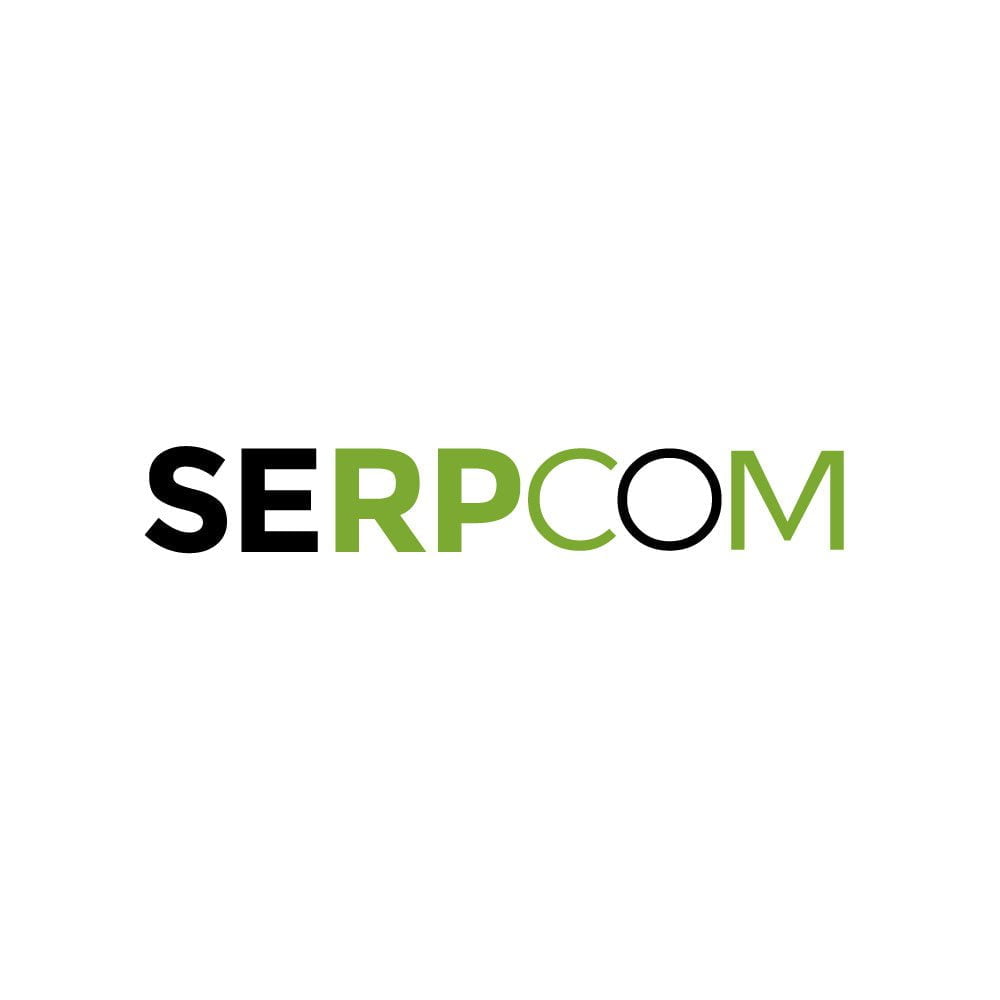 SERPCOM is a full-service Boston digital marketing agency focused on improving online visibility, increasing traffic, raising revenue and providing SEO services.
SERPCOM is a full-service Boston digital marketing agency focused on improving online visibility, increasing traffic, raising revenue and providing SEO services.
SEO-first: A fundamentally better approach to online marketing.
Digital Marketing | SEO | Web Design & Development | Search Engine Marketing

SERPCOM is a full-service Boston digital marketing agency focused on improving online visibility, increasing traffic, raising revenue and providing SEO services. SEO-first: A fundamentally better approach to online marketing.
Digital Marketing | SEO | Web Design & Development | Search Engine Marketing
SERPCOM is a full-service Boston marketing agency focused on improving online visibility, increasing traffic, raising revenue and providing SEO services for leading brands.
Maximize the value of your website and turbo charge your online marketing efforts with SERPCOM. Call or click the button and start making the web work for you.
Just click on the Phone Number to dial on your phone:
